Wild, freedom-loving, indomitable and proud – where does the myth of the tough Highlander actually come from? Perhaps from their hard life back then? We clear things up…
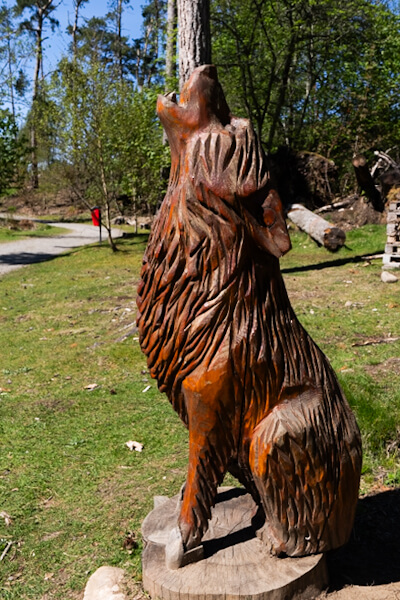
Intro and travel report
Where on earth is Newtonmore? In the eastern Highlands, on the edge of the Cairngorms National Park.
This is where the Highland Folk Museum is located. Originally a collection of old houses, it is now a fantastic, large and varied open-air museum.
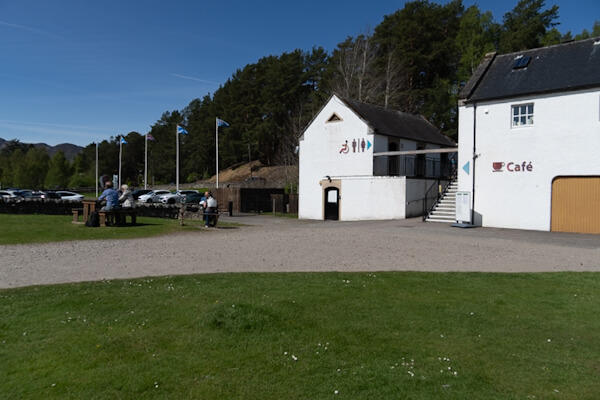
Here you will find houses, facilities and living situations that show life in the Highlands, from the late Middle Ages to almost modern times.
Wonderfully embedded in the marvellous landscapes of the eastern Highlands, you can take a long walk, browse and explore – and take photos, of course.
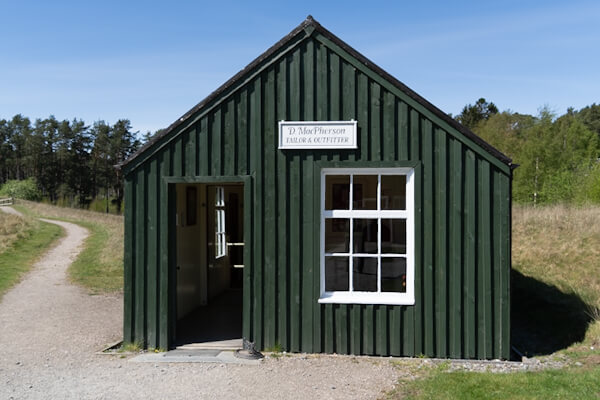
I found the Highland Folk Museum by chance on Google Maps when I was looking for a suitable route from the north to the Cairngorms National Park.
I’ve visited more than enough castles and fortresses, but not so many folk museums. Following the myth of the wild Highlanders, I was curious to see what would await us there.
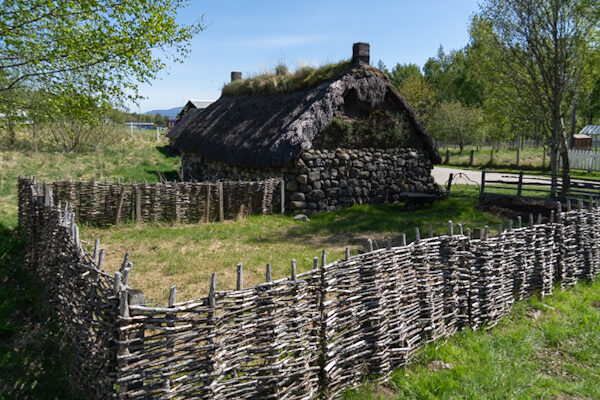
The area is huge and I didn’t visit every part of it. I’m less interested in modern times anyway, so I wandered past the years 1900 and 1800 relatively quickly and soon found myself in a rural peat village from the early 17th century.
A tall druidess was already watching over the few arrivals at the entrance, her hand resting on a menacingly massive staff.
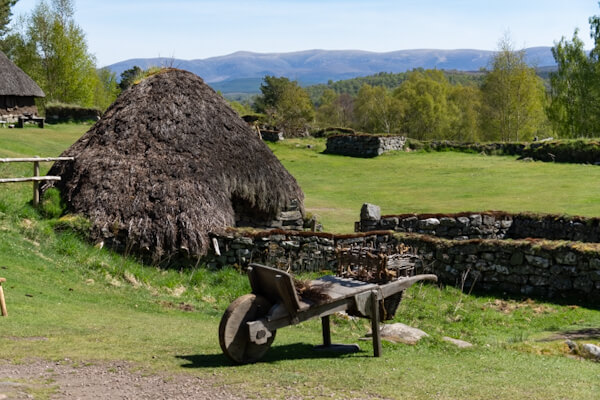
The young lady turned out to be a very nice guide in matching costume. She told me a bit about people’s lives back then and answered lots of questions.
The houses usually only have a very low door, but no windows. There is a flue in the roof for the fire, which burns in the centre of the living room and is not only used for cooking, but also provides warmth.
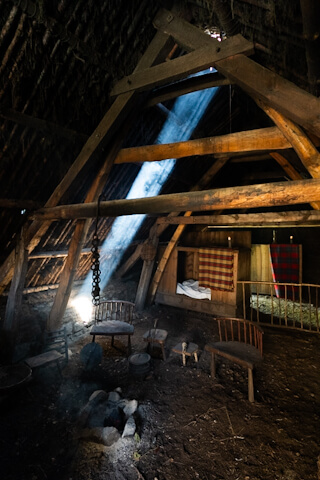
The one or two rooms of the houses are sparsely furnished, with a few pieces of home-made furniture.
The smoke from the fire wafts through the few rays of sunlight that penetrate through the roof opening into the interior, otherwise it is largely dark in the house.
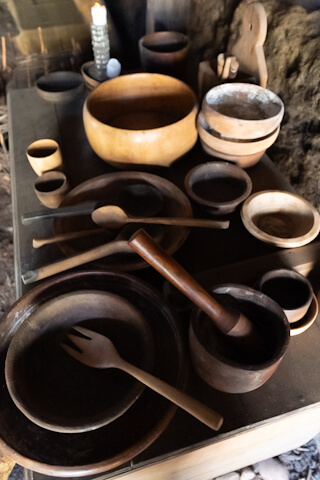
Outside are everyday objects, tools and equipment for crafts and agriculture. They are mostly made of wood, with only a few parts made of iron, mainly plough blades and tools. Plates, bowls, spoons and forks are also carved from wood.
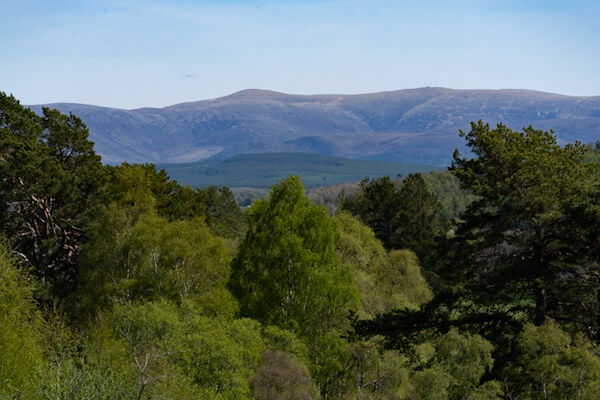
There is a whole row of houses in the small village, a small pond with ducks and a few roofs under which craftsmen practised their trade. There are millstones, grindstones and other tools on rough tables. There is also an old oven.
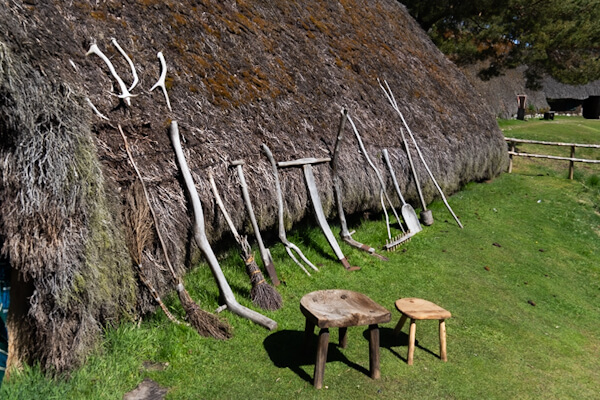
People in the Highlands lived from very modest farming and livestock farming. Houses and everyday objects were built from what was found in nature: stones, wood and heather, or reed, which was used to cover the roofs.
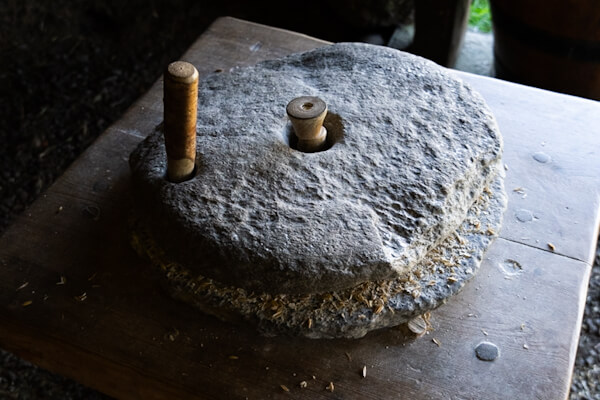
All other items had to be acquired through trade, in exchange for cattle, sheep or whatever. The fires did not always burn wood; depending on the region, it could also be peat, which was cut and dried by hand in the moors.
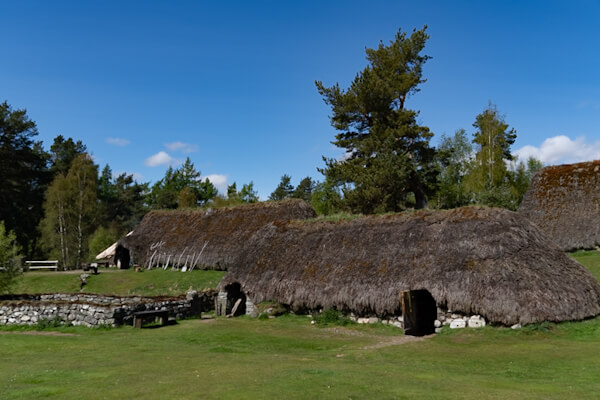
People fished in streams and lakes and gathered mushrooms and berries in the moors and forests to enrich their diet. But the winters were cold and harsh.
Meat was available, but plant-based food was almost impossible to preserve. Vitamin deficiency was therefore widespread in the lives of the Highlanders in winter.
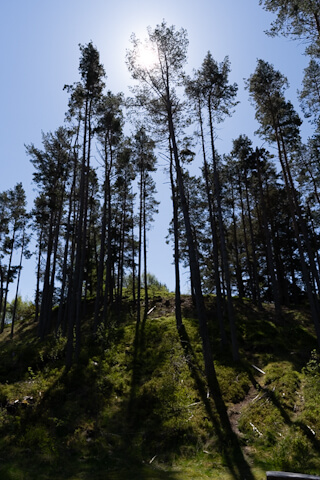
The reputation of the tough Highlanders can certainly be derived from the hard and meagre life they led.
Incidentally, this not only applies to the Highlands, but also to the Scandinavians and many people in Northern Europe at the time.

I walk slowly back through a pretty pine forest. I visit a tailor’s shop (1800?), an old schoolhouse (1900?), several workshops and various cottages and find myself back at the exit.
The sun is still shining and we (meanwhile my wife has taken our dog for a walk and done a bit of shopping) climb back into our campervan, satisfied.

Conclusion
If you don’t just want to see the Highlands, but experience them more intensively and learn something about them, then I can only warmly recommend the Highland Folk Museum. We had a great time in the beautiful open-air facility! See: https://www.visitscotland.com/info/see-do/highland-folk-museum-newtonmore.

By the way, the eastern Highlands are absolutely beautiful! Another corner that is not necessarily in the tourist mainstream, but is absolutely marvellous!
I will also write a separate article about the Cairngorms National Park and Royal Deeside and link it to you below.
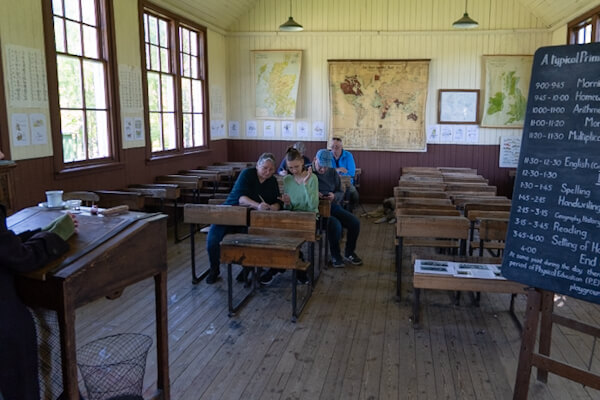
More interesting articles for you
CANALS, LOCKS AND MONSTERS: FORT AUGUSTUS AND THE LOCH NESS
ACROSS THE CAIRNGORMS NATIONAL PARK AND THROUGH ROYAL DEESIDE
PORTSOY: COSY HARBOUR TOWN ON THE NORTH-EAST COAST
Cover picture: In the Highland Folk Museum (Photo: Ulrich Knüppel-Gertberg)